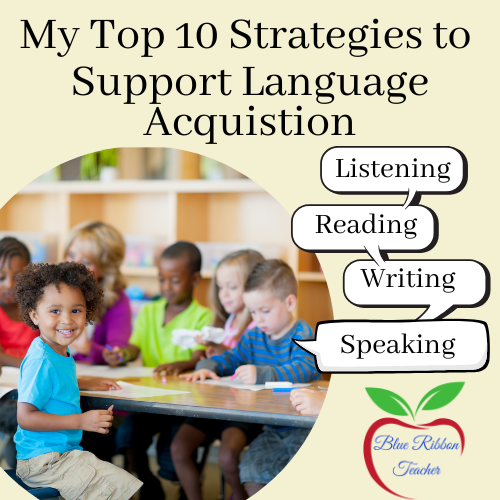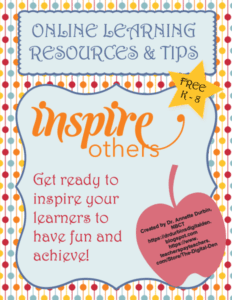5 Simple Strategies to Welcome Newcomers at School
What is a newcomer? According to www.dictionary.com, a newcomer is a person that has recently arrived. In this article, we will learn strategies focusing on how to welcome newcomers to your classroom. As we begin to discuss our role in welcoming newcomers into the classroom, let’s reflect upon a few related questions.
Have you been to a new place where you did not know anyone?
How did that make you feel?
How did you learn what to do?
Let’s add a few more layers to this newcomer experience. Did the people in this environment speak the same language as you? No? How did that make you feel? What did you do? Was your experience positive or negative?
Believe it or not, these are the exact experiences newcomers and monolinguals have when walking into a new classroom environment.

Moving to a new place can be an overwhelming and intimidating experience. Whether it’s a new country, city, or classroom, newcomers often struggle to find their footing and adjust to their surroundings. That’s why it’s important for educators to help these students feel welcome and at home. In this article, I will explore five simple ways to make our newcomers feel welcome in the classroom.
1. Importance of Welcoming Newcomers
How does your district or school welcome newcomers? Some districts or schools have an English language department with translators on call, pamphlets in various languages, and community contacts with resources and other same language families available to help a new family transition into the community.
Other resources can include assistance finding housing, accessing healthcare services, or navigating the local education system. Sharing essential information about the community, such as local services, transportation options, and important contact numbers are also important resources to share with families.
Another way to offer support is by establishing a newcomer support center or a dedicated helpline. This resource can provide newcomers with the information and guidance they need to navigate various aspects of their new life. Having a central point of contact can greatly ease the transition process and make newcomers feel supported.

When newcomers feel welcome, they are more likely to integrate into the community, build relationships, and contribute positively to their new surroundings. By creating a welcoming atmosphere in your school and classroom, can ensure that newcomers have the support they need to thrive in their new environment. What resources do your district, school, and classroom have available for supporting a successful transition to welcome newcomers.
2. Creating an Atmosphere to Welcome Newcomers
Does your school or classroom have a welcoming atmosphere for newcomers? Creating a welcoming atmosphere is another aspect in making newcomers feel at school. This atmosphere can be achieved in a variety of ways to foster a sense of inclusivity and acceptance. Everyone should feel valued and respected, regardless of their background or origin.

One way to create a welcoming atmosphere is by promoting diversity and celebrating different cultures. This can be promoted through the curriculum and lesson by carefully choosing books you read to your students. Perhaps these books take place in the newcomers country and shares relevant cultural information. This is a great opportunity to invite students to share about their own culture. Using instructional resources and encouraging students to share their traditions, customs, and
stories can help newcomers feel like their culture is appreciated and respected in your school and classroom.
Some schools celebrate different cultures as a monthlong event or a different culture each month. One way to do this is organizing cultural exchange events or food festivals that a great way to bring people together and foster understanding, inclusivity, and acceptance. Food is always a great opportunity to bring people together.
Another important aspect of creating a welcoming atmosphere is ensuring that everyone feels safe and comfortable. This means addressing any instances of discrimination or prejudice promptly and effectively. When cultures learn more about each other and how together the learning environment is better and more rich with the cultural diversity, newcomers feel welcome.
3. Welcoming Newcomers and Providing Support
How do you promote connections in your classroom? Introducing newcomers to existing members of the school and classroom is a crucial step in helping them feel welcome and connected. Allowing students to sit by same L1 peers has numerous benefits. This strategy supports students in acquiring the second language, builds friendships and oftentimes family connections. When a peer becomes a friend who can help the student navigate the new learning environment, the newcomer experience additional success. Building social connections is vital for newcomers to feel a sense of belonging and support.

Another way schools can welcome newcomers is to facilitate introductions by organizing welcome events or meet-and-greet sessions. These events provide newcomers with the opportunity to meet and interact with existing members of the same cultural community in a relaxed and friendly environment. It’s important to encourage conversation and make everyone feel included.
These connections, whether in the classroom, school, or community can make a world of difference in helping newcomers feel supported and welcomed.
4. Providing Guidance to Welcome Newcomers in the Classroom
Newcomers often face challenges in navigating their new environment. Providing clear instructions and guidance can help alleviate some of their stress and make them feel more comfortable.

Giving the same language student peer time to translate instructions for the newcomer helps the newcomer understand what is going on in class. Using technology to include a translation app is another way to communicate with students and families. The newcomer family wants the child to be successful, but there are language barriers that present a challenge. Using technological resources to translate instructions, documents, and videos is a powerful tool to newcomer learning in the classroom and help the newcomer feel more confident in the new classroom.
Additionally, offering guidance on cultural norms and expectations can help newcomers navigate social situations with ease. For example, explaining common greetings, expressions, and social customs can prevent misunderstandings and foster positive interactions. By offering this guidance in the student’s first language, newcomers can feel more confident and included in social settings.
5. Welcome Newcomers: Following Up and Checking In
Making newcomers feel welcome is an ongoing process that requires continuous effort. It’s important to follow up and check in on newcomers to ensure that they are settling in and feeling supported.

One way to follow up is by assigning a designated point of contact for newcomers. This person can periodically check in, answer any questions or concerns, and provide ongoing support.
This personal touch shows newcomers that they are valued and that their well-being is a priority.
Additionally, hosting regular feedback sessions or surveys in the newcomers first language can help identify areas where improvements can be made. By actively seeking feedback from newcomers, districts, schools, and classrooms can continuously improve their welcoming initiatives and ensure that they are meeting the needs of newcomers effectively.
Welcome Newcomers Free Resources
Related Resources to Welcome Newcomers
Effective Strategies for Language Acquisition
How to Teach With Children’s Literature: Featuring All Are Welcome
Final Thoughts About Welcoming Newcomers
Creating a welcoming environment for newcomers is not only the right thing to do, but it also benefits the all members. By making newcomers feel welcome with the tips shared above, foster a sense of belonging, encourage diversity, and build stronger, more inclusive classrooms, schools, and districts. By implementing the simple strategies outlined in this article, we can make a significant difference in the lives of newcomers. Let’s embrace diversity, promote inclusivity, and create a world where everyone feels welcome and valued, no matter where they come from or where they’re going. Together, we can make a lasting impact and create a more welcoming world for all.





